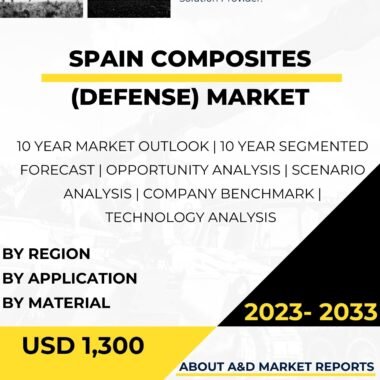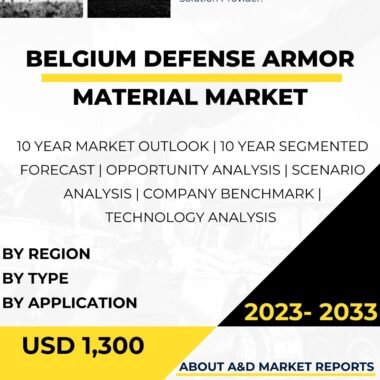Description
The South Korea defense armor material market is a critical and rapidly growing segment within the nation’s defense industry. Armor materials are essential for enhancing the protection and survivability of military vehicles, aircraft, and personnel against various threats, including ballistic, blast, and chemical hazards. This article provides an in-depth analysis of the current state, growth drivers, challenges, key players, and future prospects of the South Korea defense armor material market.
The historical context of the South Korea defense armor material market can be traced back to the nation’s efforts to bolster its defense capabilities and protect its armed forces from evolving threats. As South Korea faced complex security challenges and the need to modernize its defense forces, the development and adoption of advanced armor materials became crucial for the defense industry.
In the current landscape, the South Korea defense armor material market has witnessed significant growth and diversification. It encompasses a wide range of materials, including composites, ceramics, metals, and advanced textiles, used in various defense applications such as body armor, vehicle armor, and aircraft armor.
One of the primary growth drivers for the South Korea defense armor material market is the country’s focus on indigenization and developing homegrown defense technologies. The government’s commitment to fostering domestic defense capabilities has led to increased investments in research and development, driving innovation in armor material technology.
Moreover, advanced armor materials are crucial for enhancing the survivability of military assets and personnel in modern warfare. The ongoing need to protect against a wide range of threats, including bullets, explosive devices, and chemical agents, drives the demand for advanced and lightweight armor materials.
Furthermore, South Korea’s strategic location in Northeast Asia and the presence of potential adversaries underscore the importance of having a robust defense armor material infrastructure. Advanced armor materials play a vital role in safeguarding critical assets and enhancing the resilience of defense platforms.
The South Korea defense armor material market also benefits from the nation’s strong manufacturing capabilities and skilled workforce. With a well-established materials industry and expertise in engineering, South Korea is well-positioned to develop and manufacture high-quality armor materials.
Additionally, strategic collaborations with international armor material suppliers and technology providers have been instrumental in accessing advanced technologies and expertise. Partnering with established global companies allows for technology transfer and enables South Korea to leverage best practices in armor material development.
However, the market also faces several challenges. One of the primary challenges is the constant need for innovation and technological advancement. As defense threats evolve and adversaries develop more sophisticated weapons, developing armor materials that offer superior protection without compromising on weight and mobility requires continuous research and development efforts.
Moreover, the defense armor material market is highly competitive, with established international suppliers dominating the global market. To maintain competitiveness, South Korean manufacturers must focus on specialization, providing unique armor material solutions tailored to specific defense requirements.
Additionally, adhering to stringent international regulations and standards in the defense industry can impact the market’s global reach. Exporting advanced armor materials to certain regions may be subject to scrutiny and restrictions, limiting market access.
To address these challenges and ensure sustained growth, South Korea’s defense industry must prioritize research and development in armor material technology. Investing in advanced engineering capabilities will enable the country to develop cutting-edge armor materials, maintaining a competitive edge in the global market.
Furthermore, fostering strategic collaborations with international partners can enhance technological capabilities and provide access to broader markets for South Korean defense armor materials. Collaborating with allied nations fosters knowledge exchange and strengthens mutual defense capabilities.
The South Korean government’s continued support for the defense armor material market is crucial for promoting growth and innovation. Financial backing for research and development initiatives, as well as procurement programs for advanced armor materials, will drive the adoption of state-of-the-art technology in the defense sector.
Moreover, promoting a skilled workforce and providing training and education in materials engineering will enhance the local talent pool and create a sustainable ecosystem for the South Korea market.
In conclusion, the South Korea defense armor material market is a critical and rapidly growing segment within the nation’s defense industry. Driven by the country’s focus on indigenization, developing homegrown defense technologies, and enhancing the protection and survivability of military assets, the market continues to grow steadily. However, challenges related to innovation, global competition, export regulations, and technological advancement require proactive measures from the government and the defense industry to ensure sustained growth and competitiveness in the global market. By investing in research and development, fostering strategic collaborations, and promoting a skilled workforce, South Korea can strengthen its position as a key player in the global defense armor material market and enhance its overall defense capabilities.




